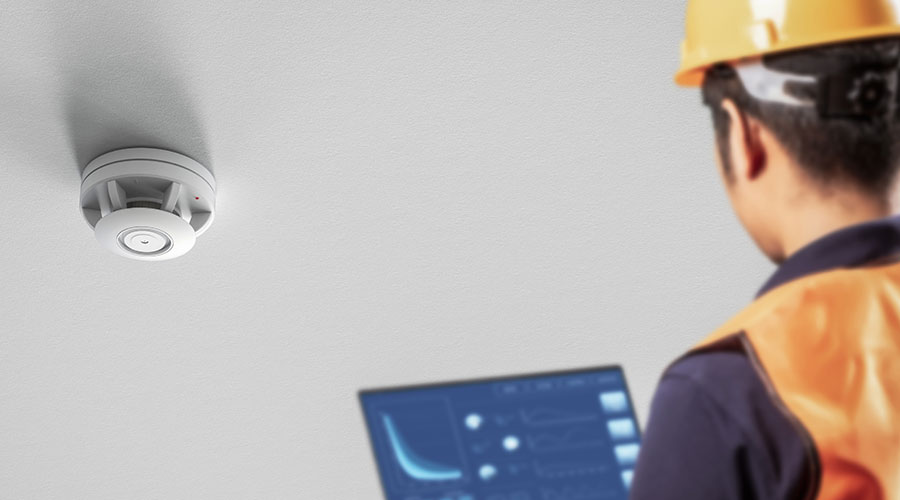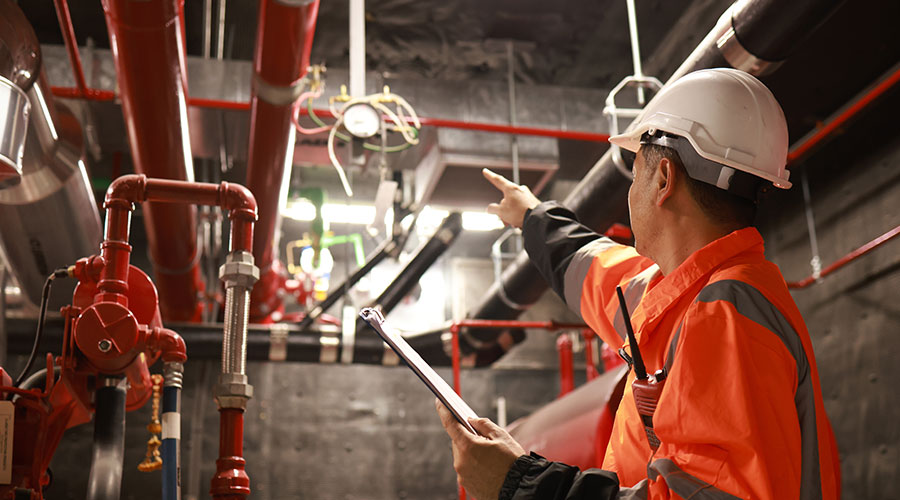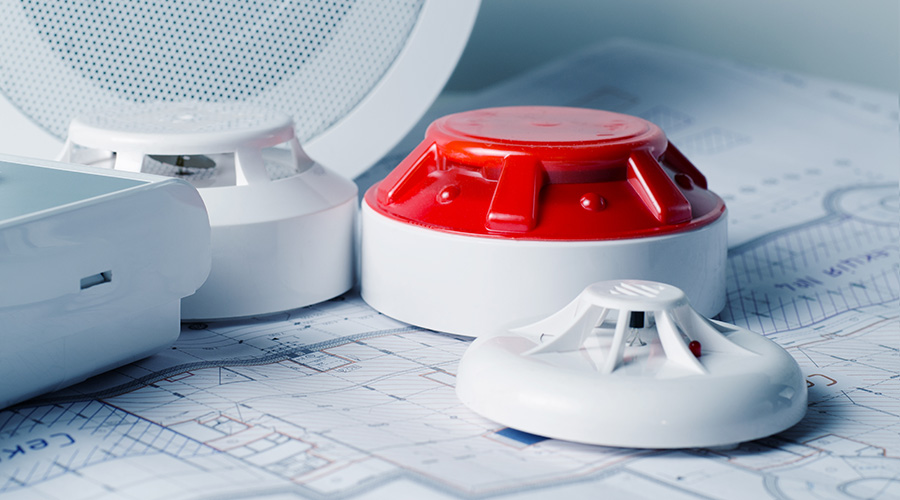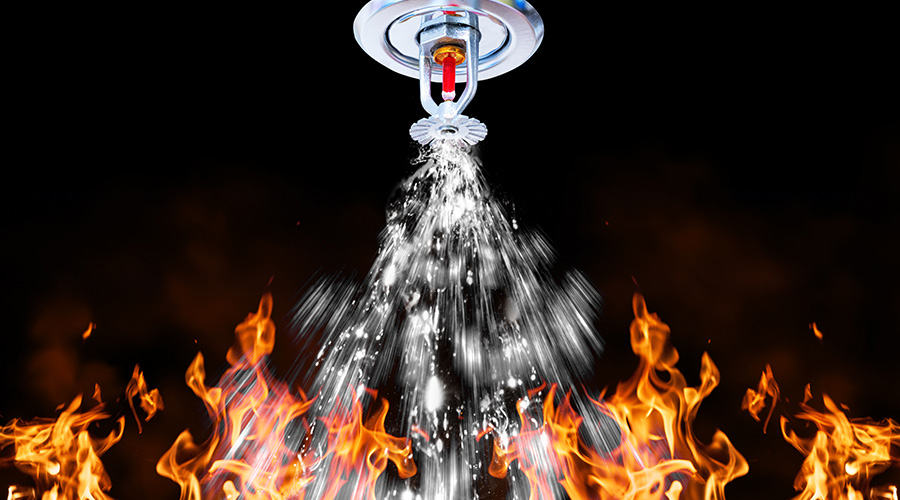Keeping Fire In Its Place
For firestop systems to perform as intended, managers must specify and maintain them properly
A series of high-profile fires in recent years has brought renewed intensity to fire-safety components and systems in institutional and commercial facilities. In university dormitories, nightclubs, hospitals and office buildings, managers are revisiting plans and equipment in an effort to more effectively protect facilities, operations, occupants and visitors.
As part of this process, they are carefully reviewing products and equipment related to firestopping and compartmentation. Part of this review must include a series of questions on fire and life safety, including: Are fire- and life-safety components maintained, up to date and operating? Have cable technicians firestopped all penetrations, expansions, head-of-wall and perimeter joints in fire-resistant-rated walls and floors? Is the detection and alarm system ready? Has the sprinkler system received proper maintenance? Are fire and smoke dampers in the right places and operating as designed? Have swinging and rolling doors been maintained? Does the organization have an education plan in place to keep contractors who work in buildings from poking holes and not filling them with a tested, listed and effective compartmentation feature?
Definitions, Roles and Benefits
The National Fire Protection Association (NFPA) promotes the concept of total fire protection, including compartmentation, alarms and detection, sprinklers and education. Firestops and compartmentation play a central role in fire and life safety. Firestopping is essential, as small holes in walls and floors might allow fire to shoot to the next compartment.
This provision helped to keep fire from spreading vertically in Chicago’s LaSalle Bank Building fire in 2004. Firestopping also has helped to contain fires in hospitals, industrial buildings, hotels, and other facilities. Effective compartmentation is a requirement in the International Building Code. Maintenance of effective compartmentation is included in the International Fire Code.
Compartmentation is important because it protects areas of buildings for occupants waiting to be rescued or for firefighters staging an attack on a fire. It also provides life safety via protection from fire in another room or compartment.
Firestopping, fire doors and hardware, fire dampers and fire glass in fire- and smoke-resistant walls and floors make compartmentation a viable technology. Also among its benefits, compartmentation minimizes property loss, and minimizes interruptions to building operations. According to one large hotel chain, if a fire is contained to one room, the floor can reopen for business the next day. Once fire and smoke leave the room of origin, however, the whole floor is out of service for a month.
Effective compartmentation covers important components that must work with fire-resistant walls and floors to provide safety for areas of buildings, such as stairwells, corridors, storage and mechanical rooms, and living areas. Applied to a tested design, these components become firestop systems when installed to specific zero-tolerance-based assemblies.
Fire-detection systems, alarms and sprinklers are classified as active items, while the components of effective compartmentation are known as passive items, even though they are somewhat active when called upon to work. Some compartmentation features have active elements that work when exposed to smoke and fire.
In some cases, firestop systems also are heat-activated to seal around a penetrating item, such as a pipe, that might be disintegrating in a fire. Fire-rated glass might be activated with heat, and automatic fire doors can close when called upon by the building controls.
Component Coordination
Many components must come together during construction to make a building’s fire- and life-safety systems perform as designed. With proper coordination, system components work efficiently and cost-effectively. And with comprehensive maintenance, the systems continue are ready to deliver safety when called upon. Below is an overview of fire- and life-safety system components that managers can review to develop, upgrade or streamline a firestop maintenance program:
FIRE-RESISTANT WALLS AND FLOORS. Managers should understand locations, and compile all maintenance guidelines from initial and ongoing construction documents in order to identify all fire-resistant wall and floor systems. When deviations to these assemblies exist — including unprotected holes and gaps — they need to be addressed. The manager needs to have a repair procedure in place and provide all documentation from the manufacturer or engineer validating the systems to the fire marshal or code official.
FIRE-RESISTANT PENTRATIONS AND JOINTS. Managers must document firestop systems to complete the effective compartmentation system. They should derive labeling or identification systems directly from the as-built documentation. Managers also should have a procedure in place to inspect and re-install firestops in penetrations made between inspections by building and contractor service personnel for all compartmentation features.
FIRE-RESISTANT DOORS AND HARDWEAR. Managers must produce documentation showing that designated fire and smoke barriers have functional swinging and rolling fire doors that are appropriate to the wall assembly’s fire rating. Code language already exists for a door’s hourly rating. Depending on local code requirements, the application might require pressure testing, a new requirement. Managers also must verify compliance of door hardware and have education plans in place for building occupants and service personnel to keep doors in operable condition.
FIRE ANDSMOKE-RESISTANT DAMPERS. Managers must understand the requirements for systems tested to standards UL 555, Fire Dampers, and UL 555-S, Smoke Dampers, as well as for other listed systems. Proper inspection of fire- and smoke-damper assemblies might require inspectors to verify operation of the damper mechanisms and an airflow analysis. Damper manufacturers, the Sheet Metal and Air Conditioning Contractors’ National Association and other code and standard authorities typically forbid variations to tested systems, without engineering assistance.
Maintenance for Success
The Firestop Contractors International Association (FCIA) recommends maintenance of effective compartmentation and structural protection to ensure performance of this critical system during a fire.
“Firestopping and effective compartmentation maintenance are as necessary as servicing HVAC systems,” says Scott Rankin of Pyro-Stop, LLC and FCIA’s past president. Adds Bob Hasting of Specialty Firestop Systems in Portland, Ore., and an FCIA board member, “If maintained periodically, facilities can understand and control costs. Ignoring maintenance can drive up costs when a building manager finally gets around to catching up.”
To protect occupants, property and business operations, maintenance and engineering managers should put procedures in place as an operations standard. For example, it is important to have measures in place that eliminate the common practice among occupants of propping open of fire- and smoke-resistance-rated doors. Propping open a door and restricting its ability to close in case of a fire might cause the fire to spread into other areas. Managers also can enhance fire and life safety by implementing a maintenance schedule for self-closing doors to ensure they operate properly. Occupants, owners and managers also must receive training about the result of fire doors being left open when a fire occurs.
Managers should develop a method to teach building occupants their responsibilities to understand which doors can be propped open by qualifying activation hardware. Occupants also should be educated to understand what compartmentation is and how it protects their lives, property and continuity of operation. It’s not that hard to understand once people know what effective compartmentation is and how it can save their lives. With understanding, comes acceptance that these important assemblies must be maintained, and respected.
Procedures also must exist for managing trades people who breach a fire-resistance rated assembly to run services throughout facilities. Managers should consider attaching procedures for firestopping and other effective compartmentation features requirements to contracts for electrical, plumbing, mechanical, cable and low-voltage contractors, building personnel, and others who might penetrate the fire- and smoke-resistance rated assemblies. This procedure should assign responsibility for verification of firestopping systems installed after new pipes or cables are installed. Some managers have even excluded this work from contracts, and hired a specialty firestop contractor to complete the firestopping and compartmentation features.
With this in mind, education becomes critical for the maintenance team to be effective. Maintenance people might be able to close doors, but occupants have responsibilities in fire and life safety, too. Everyone needs to understand the risks when working around fire-resistant assemblies, alarms and detection systems and sprinklers.
Bill McHugh is executive director of the Firestop Contractors International Association, www.fcia .org, (630) 690-0682.
Spotlight: FCIA
Specialty firestop contractors can handle all openings in fire-resistant walls and floors. Firestop Contractors International Association (FCIA) members can follow up penetrations or joints made by workers. It is good practice to inspect new construction and retrofit applications. The FCIA, manufacturers, testing laboratories and the industry have developed two standards for inspection, including destructive testing as a method, with very uniform procedures at ASTM. For more information, visit www.fcia.org.
|
Related Topics:












